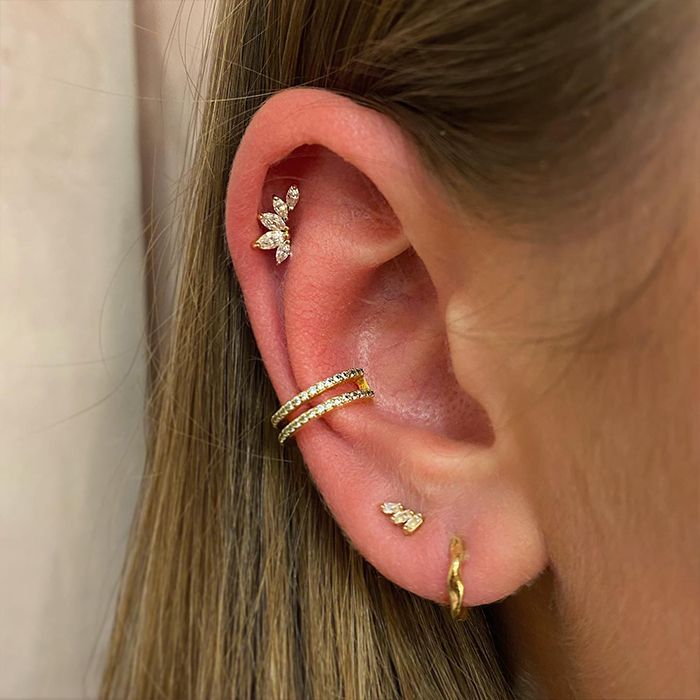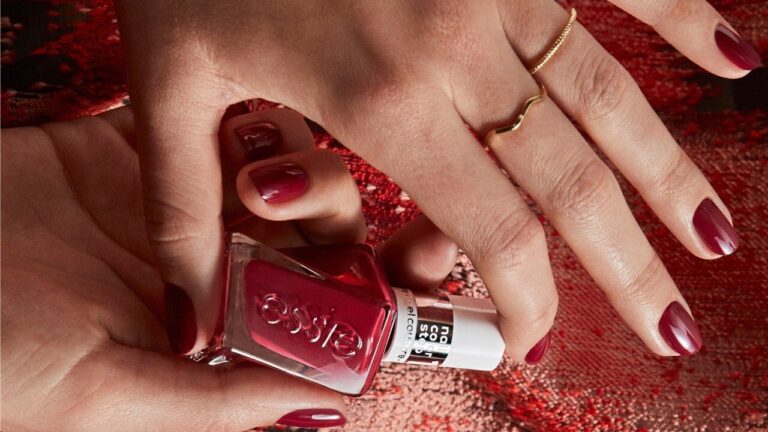
A helix piercing is a cartilage piercing located on the outer rim of the ear. This piercing has gained significant popularity due to its stylish and versatile appeal. Whether you’re looking for a unique ear accessory or a new way to express yourself, a helixpiercing offers a bold and fashionable option. In this guide, we’ll walk you through everything you need to know about helix piercings, from the piercing process to healing tips and jewelry options.
What is a Helix Piercing?
A helix piercing is a type of cartilage piercing on the upper ear, typically located along the outer rim. This piercing is different from traditional lobe piercings, which are located on the softer, fleshy part of the ear. The helix is situated on firmer, more durable cartilage, which means the piercing requires more attention during the healing process.
Helix piercings can be done with a variety of jewelry types, including hoops, studs, and barbells. While the single helixpiercing is the most common, some individuals opt for a double helix piercing or even a triple helixpiercing for a more bold appearance.
The helix piercing has become a staple in the world of body modifications, especially for those who want a piercing that looks both trendy and edgy. It’s also a versatile choice, often paired with other ear piercings such as tragus piercings, conch piercings, or forward helix piercings.
You may like: Redgif: Discover and Share High-Quality NSFW GIFs | Free Platform for Adult Content
Types of Helix Piercings
Helix piercings come in a variety of styles, each with its own unique look. Understanding these types can help you decide which one best suits your aesthetic. Below are some of the most common helix piercings:
- Single Helix Piercing: This is the most common type. A single piercing is placed along the outer ear cartilage, giving a clean and minimalistic look.
- Double Helix Piercings: This involves two helix piercings placed in close proximity on the same ear, either stacked vertically or positioned side by side.
- Triple Helix Piercing: This piercing consists of three helix piercings stacked along the cartilage. It’s an eye-catching look for those who want a bold, multiple piercing design.
- Forward Helix Piercing: Positioned toward the front of the ear, closer to the head, the forward helix is a piercing that adds an interesting twist to the traditional helixpiercing. It’s often paired with a tragus or industrial piercing.
- Double Forward Helix Piercings: Two piercings on the front part of the ear, creating a stylish and layered effect. This type is perfect for those who want something a little more dramatic than a single piercing.
Each type has its own appeal depending on the amount of cartilage you want pierced and your overall aesthetic.
How to Get a Helix Piercings: The Piercing Process
Getting a helix piercing involves several important steps to ensure a successful piercing and proper healing. Below is a detailed breakdown of the piercing process:
- Choosing a Piercing Studio: The first step in getting a helixpiercing is to find a reputable piercing studio. Choose a professional studio that has certified piercing artists with a proven track record of performing cartilage piercings. Ensure that the studio maintains strict hygiene practices.
- Consultation: During the consultation, the piercing artist will discuss the procedure with you, including potential placement, jewelry options, and aftercare. They will also check for any underlying conditions that might affect the piercing, such as infections or skin sensitivity.
- Marking the Spot: The piercing artist will clean the ear and mark the spot where the helix piercing will be placed. This step is essential to ensure the piercing is positioned exactly where you want it.
- Piercing Procedure: Using a sterile needle, the piercing artist will create a hole in the cartilage. The jewelry, typically a stud or barbell, will then be inserted into the hole. The process usually takes only a few minutes.
- Aftercare Instructions: After the piercing is complete, the piercing artist will give you detailed piercing aftercare instructions. These are crucial to help prevent infections and ensure a smooth healing process.
Helix Piercing Pain: What to Expect
Pain is a common concern when it comes to helix piercings, and it’s important to understand what you can expect. Here’s what to know:
- Pain Level: The helix piercing pain is typically more intense than a lobe piercing because it goes through the firmer cartilage. The pain is sharp but quick, lasting only a few seconds. For most people, it’s not unbearable but more uncomfortable than a lobe piercing.
- Cartilage Piercing vs. Lobe Piercing: The lobe piercing is generally less painful due to the soft tissue, whereas the helix piercings requires the needle to pass through the tougher cartilage.
- Pain Management: The best way to manage pain is to remain calm and relaxed. Some people find that deep breathing helps to reduce anxiety and discomfort. If you’re particularly worried about pain, ask your piercing artist if they can use a numbing gel.
Healing Time and Aftercare for Helix Piercing
A helix piercing requires a considerable amount of care to ensure it heals properly. Healing time can vary, but on average, it takes 3 to 9 months for full healing. Here’s what you need to know about the healing stages and aftercare for your helix piercing:
Healing Stages
- First Few Days: Swelling and mild discomfort are common right after the piercing. You may also notice some bleeding or crusting around the piercing.
- Week 1 to 4: During the first month, the swelling should decrease, but the piercing will still be tender. It’s important not to touch or twist the jewelry.
- 1 to 3 Months: As the piercing heals, it will become less painful. However, you should continue cleaning the area regularly to prevent infection.
- 3 to 6 Months: By this time, the piercing will be mostly healed, but it’s still important to follow piercing aftercare guidelines.
- 6 to 9 Months: The piercing should be fully healed, but continue using piercing aftercare to prevent complications.
Aftercare Tips
- Clean the Piercing Regularly: Use a saline solution or piercing aftercare spray to clean the area. Do not use alcohol or hydrogen peroxide, as these can irritate the healing cartilage.
- Avoid Sleeping on the Piercing: Try not to sleep on the side of the piercing during the healing process. Use a pillow with a hole to protect your ear.
- Don’t Change the Jewelry Too Early: Wait until your helixpiercing is fully healed before switching out the jewelry to avoid irritation or infection.
What to Avoid After Getting a Helix Piercing
After getting a helix piercing, certain precautions need to be taken to ensure the healing process is not compromised. Here’s a list of what to avoid:
- Sleeping on the Piercing: This can cause pressure on the piercing and may prolong the healing time or cause irritation.
- Touching the Piercing with Dirty Hands: Always wash your hands thoroughly before touching your piercing to reduce the risk of infection.
- Swimming in Pools or Hot Tubs: Pools and hot tubs can introduce bacteria into the piercing. Avoid swimming until the piercing is fully healed.
- Changing Jewelry Too Soon: Avoid changing the jewelry during the healing process, as this can irritate the piercing and delay healing.
Choosing the Best Jewelry for a Helix Piercing
Choosing the right piercing jewelry is crucial for both the appearance and comfort of your helix piercing. Here are some tips for selecting the best jewelry:
- Material: Opt for hypoallergenic materials like surgical steel jewelry, stainless steel earrings, or titanium. These materials are durable and cause fewer allergic reactions.
- Size: The jewelry should fit properly in the piercing. A piece that is too tight or too loose can lead to irritation or discomfort.
- Style: Choose a jewelry design that fits your personal style. Popular options for helix piercings include studs, hoops, and barbells. If you’re going for a minimalist look, a simple stud may be ideal, while hoops can give a more edgy appearance.
Can I Change My Helix Piercing Jewelry Early?
It’s generally recommended not to change your helix piercing jewelry until it’s fully healed. Changing the jewelry too soon can lead to irritation and an increased risk of infection. The healing process can take several months, so it’s best to stick with your initial piercing jewelry during this time.
If you absolutely must change the jewelry, make sure that the piercing has healed sufficiently, and consult with your piercing artist before doing so.
FAQs
1. How painful is a helix piercing compared to other ear piercings?
A helix piercing is typically more painful than a lobe piercing because it goes through cartilage, not soft tissue. The pain is sharp but brief and varies depending on pain tolerance.
2. How long does it take for a helix piercing to heal?
A helixpiercing takes about 3 to 9 months to fully heal, depending on how well you care for it and your body’s natural healing process.
3. Can I wear regular earrings in my helix piercing?
You should wear hypoallergenic jewelry specifically designed for cartilage piercings, such as surgical steel or titanium jewelry. Regular earrings might not fit well or may cause irritation.
4. What are the risks of getting a helix piercing?
The main risks of a helixpiercing include infection, piercing rejection, and cartilage damage. Proper aftercare and choosing a professional piercer can minimize these risks.
5. Can I remove my helix piercing jewelry once it’s healed?
Yes, you can remove or change your helix piercing jewelry once the piercing has fully healed. It’s best to wait until the healing period has passed to avoid complications.






